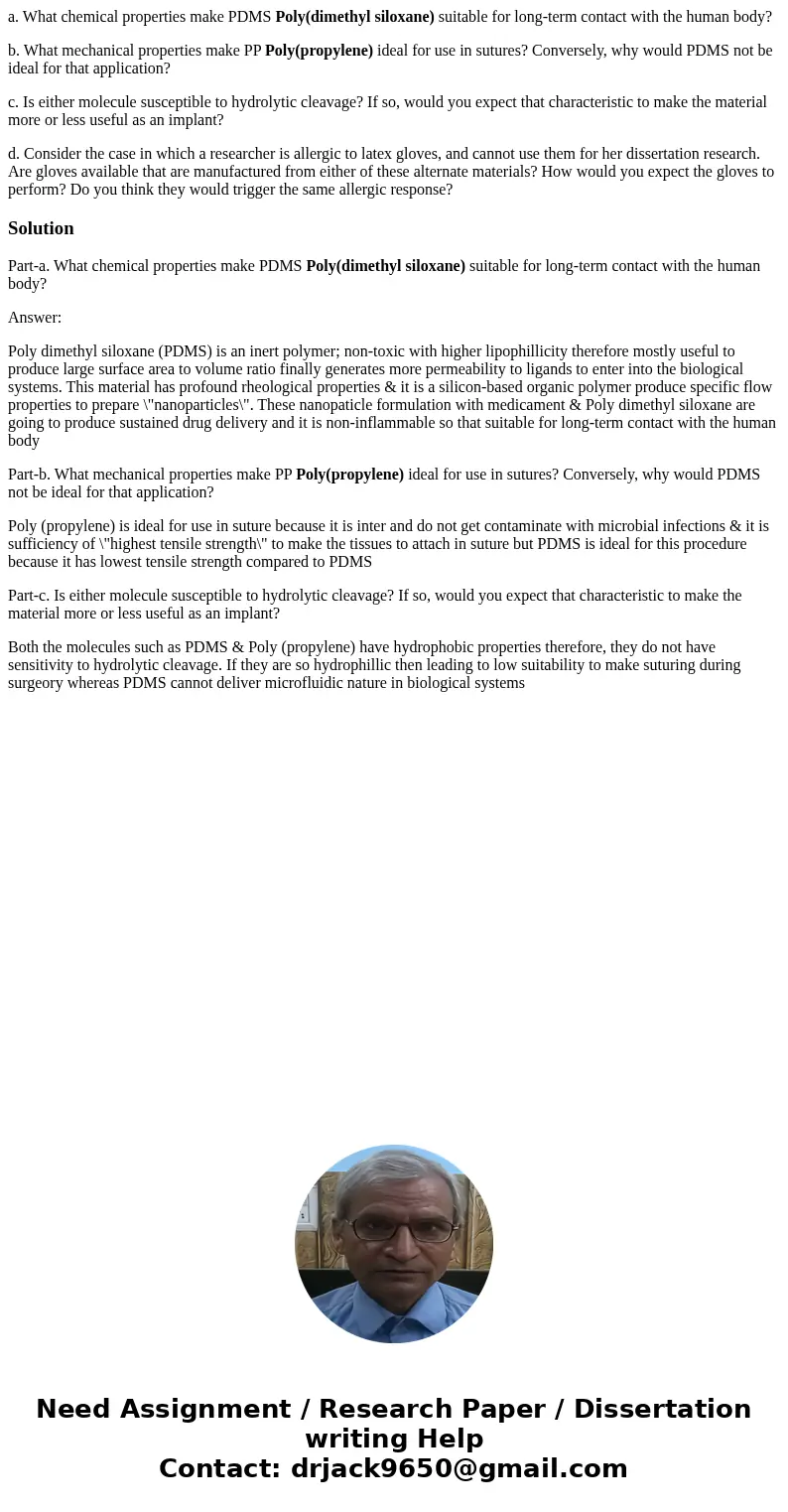a What chemical properties make PDMS Polydimethyl siloxane s
a. What chemical properties make PDMS Poly(dimethyl siloxane) suitable for long-term contact with the human body?
b. What mechanical properties make PP Poly(propylene) ideal for use in sutures? Conversely, why would PDMS not be ideal for that application?
c. Is either molecule susceptible to hydrolytic cleavage? If so, would you expect that characteristic to make the material more or less useful as an implant?
d. Consider the case in which a researcher is allergic to latex gloves, and cannot use them for her dissertation research. Are gloves available that are manufactured from either of these alternate materials? How would you expect the gloves to perform? Do you think they would trigger the same allergic response?
Solution
Part-a. What chemical properties make PDMS Poly(dimethyl siloxane) suitable for long-term contact with the human body?
Answer:
Poly dimethyl siloxane (PDMS) is an inert polymer; non-toxic with higher lipophillicity therefore mostly useful to produce large surface area to volume ratio finally generates more permeability to ligands to enter into the biological systems. This material has profound rheological properties & it is a silicon-based organic polymer produce specific flow properties to prepare \"nanoparticles\". These nanopaticle formulation with medicament & Poly dimethyl siloxane are going to produce sustained drug delivery and it is non-inflammable so that suitable for long-term contact with the human body
Part-b. What mechanical properties make PP Poly(propylene) ideal for use in sutures? Conversely, why would PDMS not be ideal for that application?
Poly (propylene) is ideal for use in suture because it is inter and do not get contaminate with microbial infections & it is sufficiency of \"highest tensile strength\" to make the tissues to attach in suture but PDMS is ideal for this procedure because it has lowest tensile strength compared to PDMS
Part-c. Is either molecule susceptible to hydrolytic cleavage? If so, would you expect that characteristic to make the material more or less useful as an implant?
Both the molecules such as PDMS & Poly (propylene) have hydrophobic properties therefore, they do not have sensitivity to hydrolytic cleavage. If they are so hydrophillic then leading to low suitability to make suturing during surgeory whereas PDMS cannot deliver microfluidic nature in biological systems

 Homework Sourse
Homework Sourse